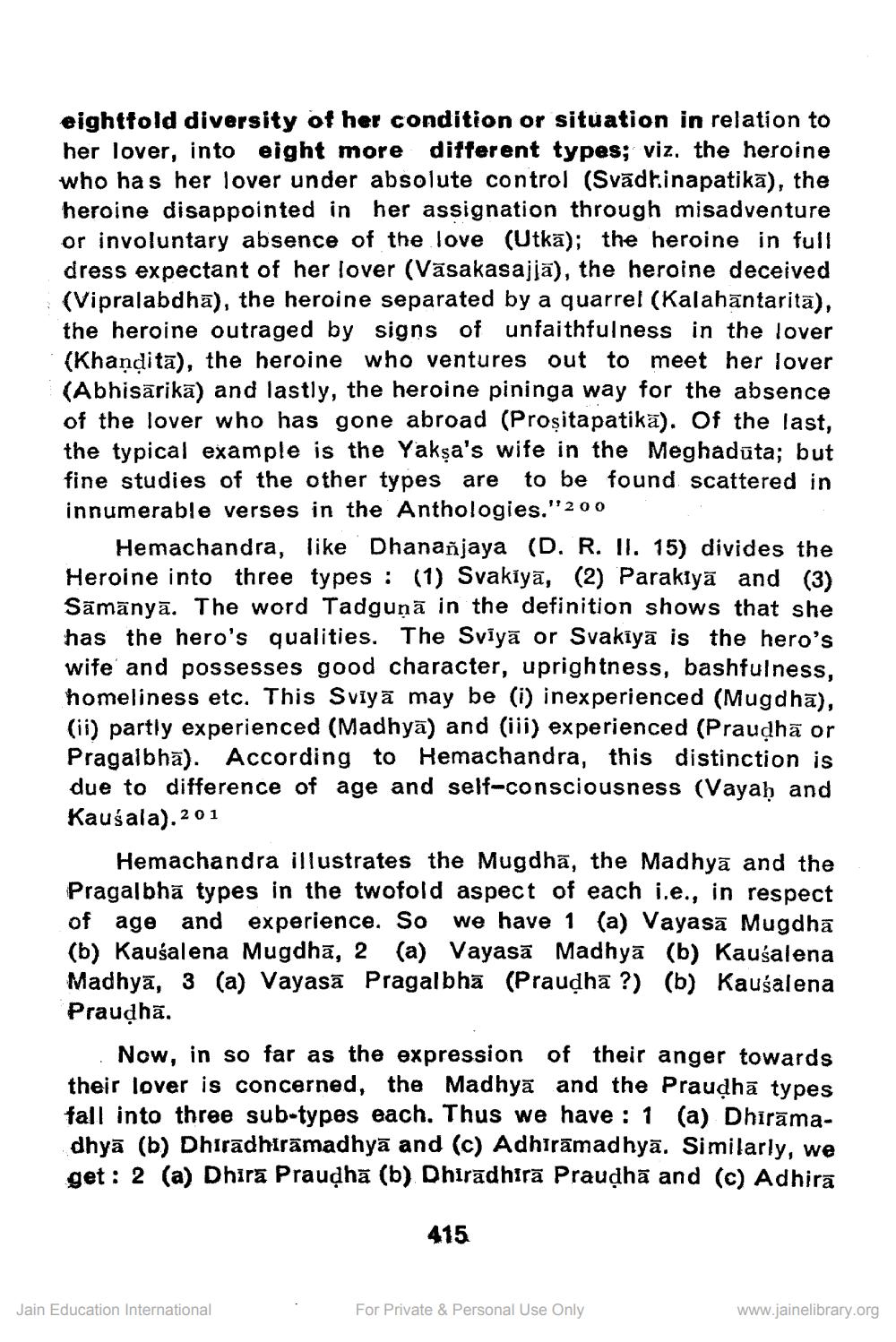________________
eightfold diversity of her condition or situation in relation to her lover, into eight more different types; viz. the heroine who has her lover under absolute control (Svādhinapatikā), the heroine disappointed in her assignation through misadventure or involuntary absence of the love (Utkā); the heroine in full dress expectant of her lover (Vāsakasajjā), the heroine deceived (Vipralabdha), the heroine separated by a quarrel (Kalahāntaritā), the heroine outraged by signs of unfaithfulness in the lover (Khanditā), the heroine who ventures out to meet her lover (Abhisarikā) and lastly, the heroine pininga way for the absence of the lover who has gone abroad (Prositapatikā). Of the last, the typical example is the Yakşa's wife in the Meghadūta; but
ne studies of the other types are to be found scattered in innumerable verses in the Anthologies."200
Hemachandra, like Dhananjaya (D. R. II. 15) divides the Heroine into three types : (1) Svakiyā, (2) Parakiyā and (3) Sāmānyā. The word Tadguṇā in the definition shows that she has the hero's qualities. The Svīyā or Svakīyā is the hero's wife and possesses good character, uprightness, bashfulness, homeliness etc. This Sviyā may be (i) inexperienced (Mugdhā), (ii) partly experienced (Madhyā) and (iii) experienced (Praudhā or Pragalbhā). According to Hemachandra, this distinction is due to difference of age and self-consciousness (Vayah and Kausala). 201
Hemachandra illustrates the Mugdhā, the Madhyā and the Pragalbhā types in the twofold aspect of each i.e., in respect of age and experience. So we have 1 (a) Vayasa Mugdha (b) Kausalena Mugdhā, 2 (a) Vayasā Madhyā (b) Kausalena Madhyā, 3 (a) Vayasā Pragalbhā (Praudha ?) (b) Kausalena Praudhā.
Now, in so far as the expression of their anger towards their lover is concerned, the Madhyā and the Praudhā types fall into three sub-types each. Thus we have : 1 (a) Dhirāmadhyā (b) Dhiradhirāmadhyā and (c) Adhirāmadhyā. Similarly, we get : 2 (a) Dhira Prauṇhā (b) Dhiradhira Prauṇhā and (c) Adhira
415
Jain Education International
For Private & Personal Use Only
www.jainelibrary.org




